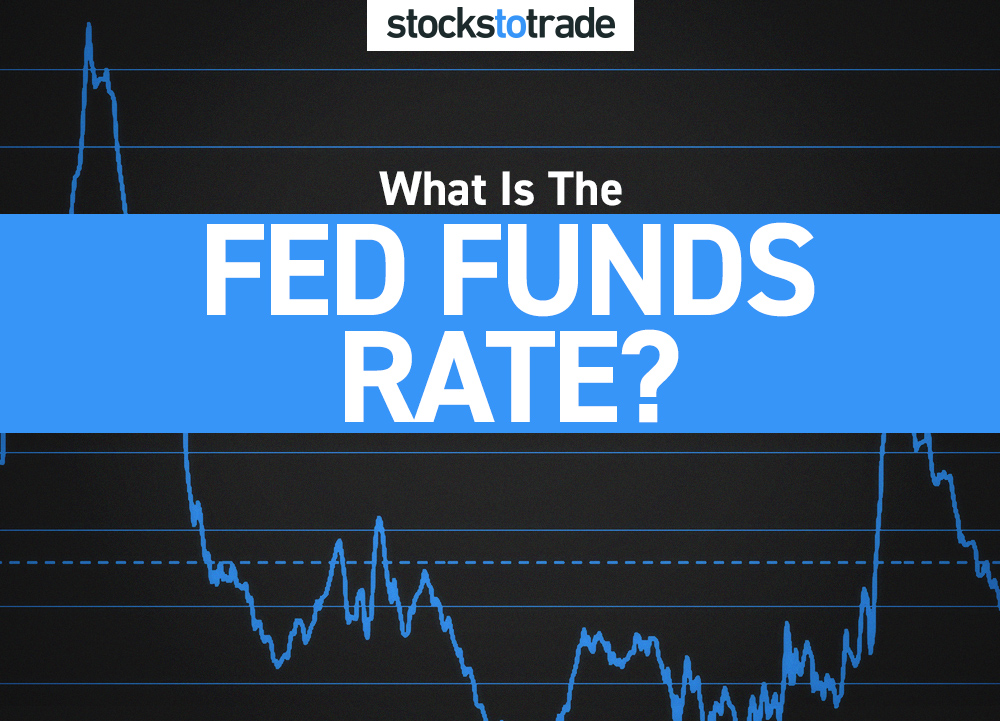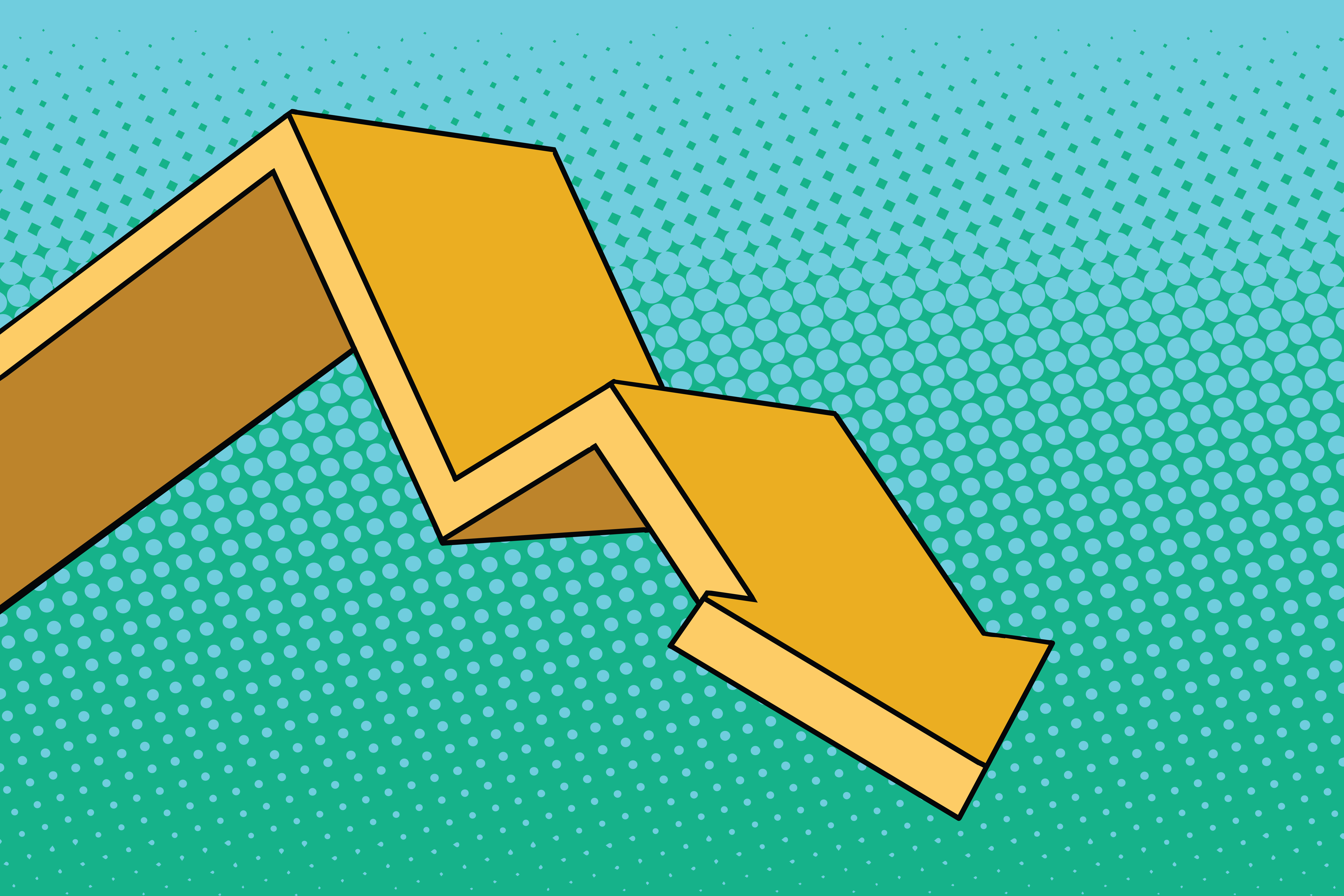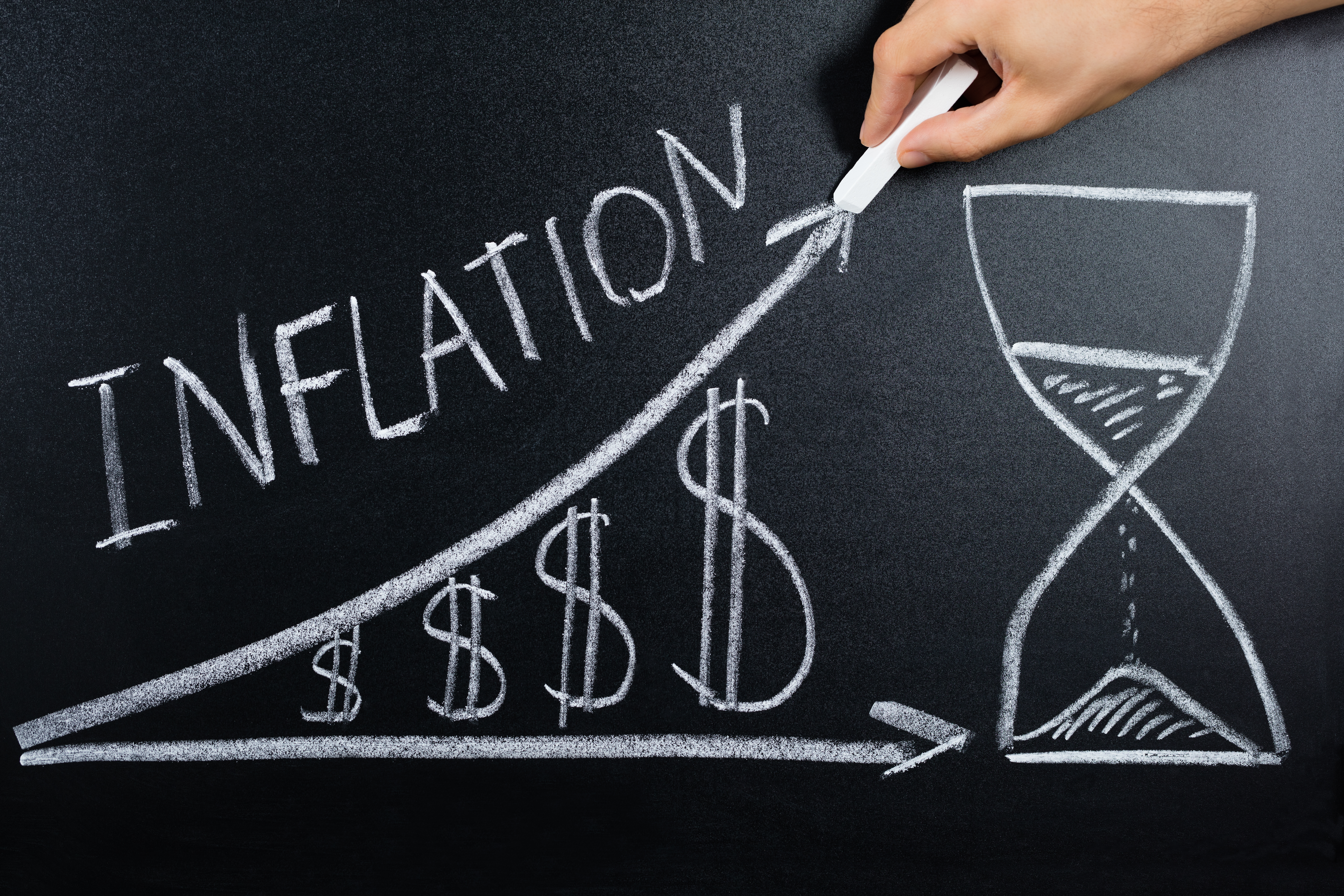
The federal funds rate — or fed funds rate for short — is popping up in a lot of conversations about the economy and trading lately.
But what is the fed funds rate, and why would it matter to traders?
While the fed funds rate is extremely important to the health of the economy, relatively few people actually understand what it is or how it works.
Here, we’ll dig deep and explain it from the beginning, starting with what the fed funds rate is. Then we’ll move on to the factors that can affect it and how, of course, it can impact the stock market.
What Is the Fed Funds Rate?
The fed funds rate is the interest rate for banks and financial depositories to lend money to one another.
Here’s the deal … By law, banks are required to maintain specific percentages of their customers’ money on a reserve basis. This is necessary so that they can have enough cash on hand to fulfill withdrawals.
The percentage differs from institution to institution and is set by the total amount of bank deposits at the bank in question.

StocksToTrade on Nasdaq — © 2019 StocksToTrade.com
This is important: Banks can’t earn interest on this money.
Since this money isn’t, well, a moneymaker, banks don’t necessarily have an incentive to maintain much more than the reserve minimums. They often try to hover as close to the low limit as possible.
But this is also important … While banks can’t earn interest on reserves, if they have extra money in the reserves, they can loan it to other banks that might be running low. And they can earn interest on that.
If the bank has an amount that’s larger than the reserve requirement, it can loan that money to another bank or financial institution. The rate that the borrowing bank has to pay is the fed funds rate.
The fed funds rate helps maintain control on the amount of funds available and therefore can help keep things like interest rates and inflation in check.
History of the Fed Fund Rate
Historically speaking, the target federal funds is kind of like gasoline prices: it’s gone up and down, sometimes pretty dramatically, based on the economy.
For example, it was as high as 20% in the early 1980s due to widespread inflation.
But then on the other end of the extreme, during the 2008 recession, the target rate was as low as 0.0% to 0.25% to help revive the economy.
Let’s discuss those extremes…

Shutterstock ID: 462268342
Highest Fed Funds Rate
The highest point for the fed funds rate to date was in the late 70s and early 80s.
During that time, inflation was at an all-time high. This was partially due to the fact that the U.S. went off the gold standard during President Nixon’s time in office. In 1978, inflation was calculated at 7.62%, but in 1979, inflation reached into the double digits.
Interest rates followed, rising in short order.
Inflation went into and stayed in the double digits in the mid-70s. Businesses tried to keep up by raising prices, but that only fed the inflation cycle.
By 1979, Federal Reserve chair Paul Volcker knew something had to be done.
He bit the bullet, raised the fed funds rate, and kept it high. It caused some severe discomfort in the short term, leading to a recession in the 1980s. But the longer-term results were positive: inflation dropped to more manageable levels.
Lowest Fed Funds Rate
On the flip side, the fed funds rate’s lowest point was 0.25%. That’s infinitesimal: less than a penny per dollar.
This was in late 2008. The catalyst? Another ‘enough is enough’ point in the economy. But this time, the extreme rate decrease followed the 10th interest rate slash in about a year. The rate was kept extremely low for a long time — until 2015.

Shutterstock ID: 178568243
Current Fed Fund Rate
So now that you have some context for the fed funds rate, let’s consider the current rate. Right now, the fed funds rate is 2.25%. This is within the ‘sweet spot’ of 2%–5% (more about that in a minute).
However, if you look at the Fed’s historical rates, you’ll see that the current rate reflects a recent decrease from 2.5%. That’s notable because it’s the first time that there’s been a decrease since 2008.
What Influences the Fed Funds Rate?
So … what affects the fed funds rate and why does it matter?
Effective Fund Rate
The fed funds rate needs to remain stable for our economy’s health.
The effective fed funds rate should ideally hover between 2%–5%. Within this range, the conditions are optimal for the GDP (gross domestic product) growth, keeping unemployment down, and more.
To understand why the fed funds rate might be adjusted, it’s important to understand how it’s set.
How Is the Fed Funds Rate Set?
The fed funds rate is determined by the Federal Open Market Committee (FOMC). That’s the Fed’s smartypants money-policy team. They meet several times a year to determine the rate.
They make decisions about adjusting the rate based on economic indicators of inflation, recession, or other outstanding events. The FOMC can’t enforce the exact rate, but they set a target rate. The specific interest rate will be negotiated between the two financial institutions in question.
They enforce this target rate indirectly by adjusting the supply of money so that interest rates will naturally fall into the zone.
- More money is added to the system to cause interest rates to lower.
- Less money or decreased supply causes interest rates to rise.
Let’s talk about the specific ways that the rate can work against things like inflation and periods of recession.

Shuterstock Image ID: 555956236
Inflation
Inflation is one of the deciding factors for the fed funds rate.
If the Fed raises rates, it’s known as ‘contractionary monetary policy.’ As the name implies, it helps to contract funds and rein in inflation.
During these times, money is at a premium, and lenders will dole out less. And the money that’s lent out will have a higher rate. Why? Because the raised rate means it’s more expensive overall for banks to keep their reserves at key levels.
Since it’s harder to get a loan during these times, it slows down borrowing, the housing industry, and the economy at large — and helps reduce further inflation.
Recession
On the other hand, a lowered rate could be a sign that the Fed is trying to revive the economy. This is called ‘expansionary monetary policy.’
With lower rates, there’s more borrowing overall because the rates are so favorable. People feel more comfortable spending and are more likely to take out loans. This can help stimulate the economy and nudge it out of a rut.
Discount Rate
The fed funds rate isn’t the only trick the Fed has up its sleeve. There’s also something called a ‘discount rate’ that plays a role in the economy’s stability…
The discount rate is the rate that the Federal Reserve charges banks if they want to borrow directly. It’s just another way to help control the money supply.

Shutterstock ID: 534465157
What Does This Mean for Traders?
It’s worth noting that the fed funds rate doesn’t necessarily show immediate results. It can take a year or more to see any actual changes in the economy. So the work of determining the rate requires plenty of forecasting.
As a trader, you want any and every advantage or edge that you can find in the market. Now you understand that there’s a delayed reaction for the fed funds rate. So by looking at it, you can help gain insight as to what might occur in the market in the coming months…
- A decline in the rate can help the economy grow, and that can bring stock prices up. But it’s a delicate balance … Too much growth can veer us into inflation territory.
- A rate increase can help decrease inflation. But it can also reduce overall spending and bring stock prices down.
For these reasons, stock analysts and traders pay close attention to the FOMC and what it’s doing, and then think long and hard about the meaning of any rate adjustments.
About STT & STT Pro
Now that you understand more about the fed funds rate, you’re probably excited to check out some stock charts and begin analyzing stock performance with all this knowledge in mind…
But where to start?
Use a powerful stock screener to help you easily locate and pore through stock charts and historical performance.
That’s where StocksToTrade comes in.
This carefully constructed and powerful stock trading and research platform is designed to help individual traders find the most promising stocks to trade. Here are just some of the features:
- A stock screener that you can use to scan based on your trading criteria. You can filter by fundamentals like EPS, P/E ratios, or your favorite chart patterns. With just a few clicks, you can find the stocks that suit your trading needs.
- Incredible charting capabilities that let you see the price action, technical indicators, and place trading alerts for stocks. You can keep track of your watchlists easily!
- A comprehensive news scanner that doesn’t stop at news but also delivers SEC filings and social media buzz. This information can help you stay on the pulse and get the most up-to-date info.
These are just a few of the many features that StocksToTrade can offer. Wanna see for yourself? Try a 14-day trial of StocksToTrade for just $7 today! This is your chance to find out why it’s beloved by so many successful traders.

Shutterstock ID: 1370948438
Conclusion
The fed funds rate might not seem like it has a whole lot to do with trading, but it does.
More than just an interest rate, it’s an economy shaper that can give traders an indication of future market conditions.
As a trader, it’s key to take advantage of any and all information that can affect stock prices. By staying current on the fed funds rate, you can further refine your trading and make more educated decisions based on the most current rates.
How does the fed funds rate factor in your trading? How has it affected your trades in the past? Drop a comment with your thoughts!

